Jurmala is the main resort of Latvia. The town has grown from a fishing village and has become popular with tourists in recent decades. Now its development is faster than ever. The climate of the Baltic coast is specific, so it is difficult to call Jurmala a beach resort in the usual sense. However, tourists come here not only during the 2 hot months, but also during the rest of the year. The area is characterized by tranquility, and visitors appreciate it.
The combination of dunes of the coastal zone and forests extending deep into the mainland made the local nature unusually colorful. Pedestrian streets stretch from sandy beaches, including Jomas. There are not so many old buildings in the city, but the existing ones are carefully monitored. Modern objects also appear, for example, the tower in the Dzintari park - one of the most unusual observation platforms in the world.
What to see and where to go in Jurmala?
The most interesting and beautiful places for walking. Photos and a short description.
- Jurmala beaches
- Concert hall Dzintari
- Jomas street
- Forest Park Dzintari
- Observation tower from the architectural bureau ARHIS
- Jurmala City Museum
- Art Studio Inner Light
- House of Aspasia
- Holiday complex of Kristap and Augusta Morberg
- Former bathhouse of E. Racene
- Dubulti Lutheran Church
- Statue of Lachplesis
- Globe of Jurmala
- Sculpture Turtle
- Jurmala Open Air Museum
- Livu Aquapark
- White dune in Lielupe
- End of the world in Lielupe
- Ragakapa Natural Park
- Ķemeri National Park
Jurmala beaches
The city is located on the Baltic Sea. The water here, even during the season, does not warm up more than 20-22 °C. However, the beaches of Jurmala are full of tourists. Swimming is comfortable for about two months a year. The beaches stretch for 32 km. They are covered with fine light sand. The most popular ones are Dzintari, Majori, Dubulti and Bulduri named after the districts. Most have a Blue Flag award for cleanliness and comfort.

Concert hall "Dzintari"
The most popular concert venue in the city and one of the most popular in the country. Events have been held at this place since the last century. But there was no full-fledged building for a long time. The construction of the large hall took place in 1962. In 2006, the reconstruction took place. The stage has become five-level, which expanded the possibilities of its use. More than 2,000 spectators can be in Dzintari at the same time.
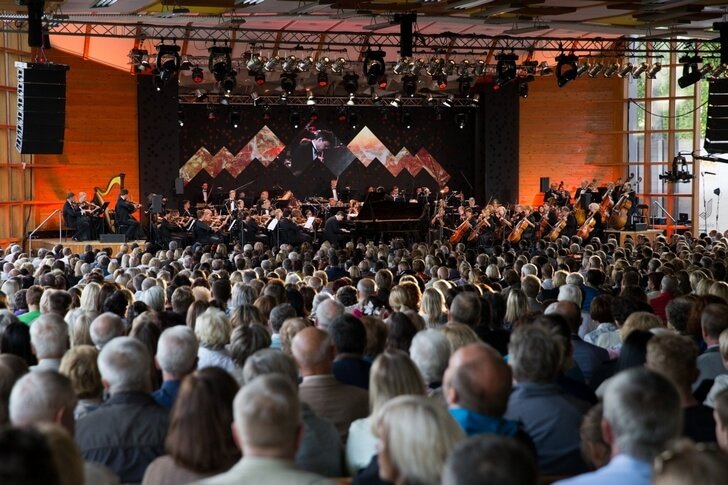
Jomas street
A business card and the first association with Jurmala among tourists. Its name translates as "sand waves". For a short time in 1999 it was named after Pushkin. The street was founded in the 19th century and is pedestrian. The end points are the Majori station and the Jurmala globe. Jomas is a venue for concerts and festivals. Here you can not only take a walk, but also sit in one of the many cafes.
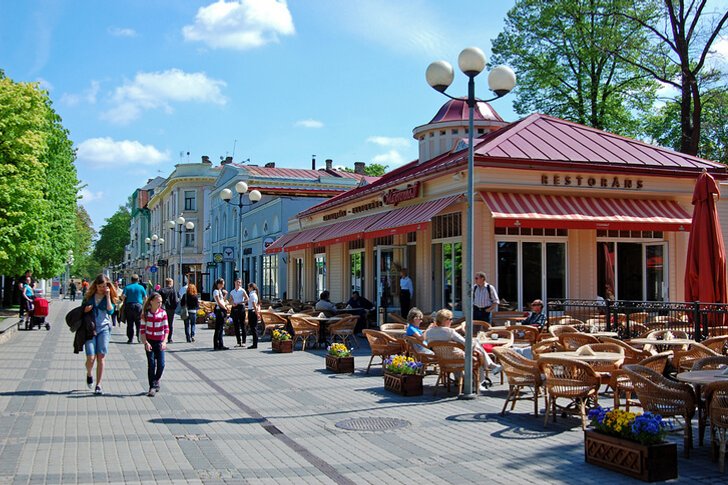
Forest Park "Dzintari"
Located in the city center. On the territory there is something to do for both outdoor enthusiasts and those who prefer leisurely walks. For the former, a skate park, sports areas, and ski slopes in winter have been created. The second is to walk through a pine grove or, in warm weather, relax among rare plants. A unique observation deck, a tower with 12 balconies, operates in the park all year round.
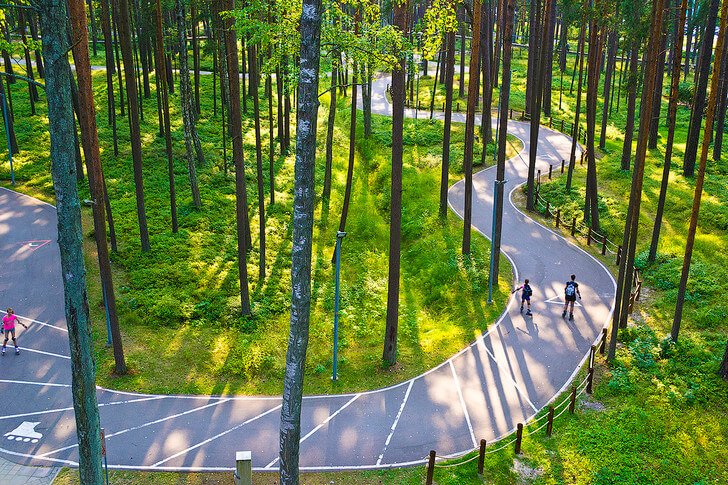
Observation tower from the architectural bureau ARHIS
The main attraction is "Dzintaru Mezaparks". Traditionally, it is included in the lists of the most unusual and interesting observation platforms in the world. The height is about 38 meters. The building is made of metal and wood. The tower looks light because of its "porous" structure. Consists of stairs and 12 balconies. Illuminates in the evening. From each of them offers a beautiful view of the surroundings.

Jurmala City Museum
The composition of the exhibitions is similar to a local history museum. However, the emphasis is on the tourist features of Jurmala. The exposition tells about the development of the city from the beginning of the century before last to the present day. Among the interesting sections stands out a collection of bathing suits, finds raised from the seabed, and postcards. The guides also talk about merchant and warships that plied the Baltic Sea in the past.
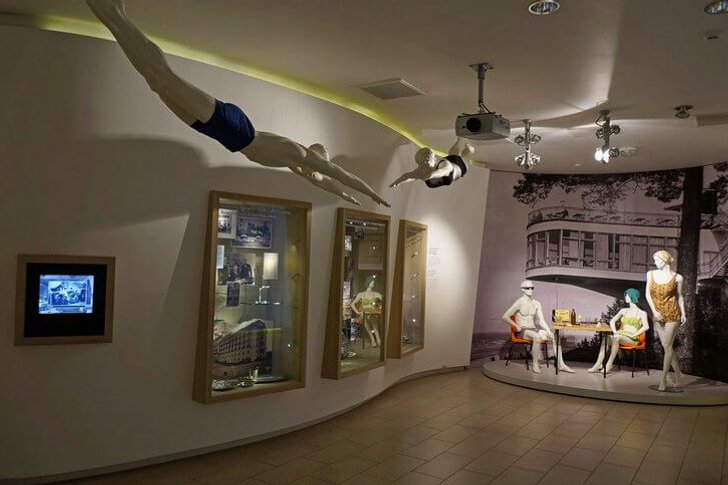
Art Studio Inner Light
An unusual art gallery is located in the house of the artist Vitaly Ermolaev. Some time ago, the master patented the composition of paints. Using his own method, he creates paintings in the style of light painting. Under certain lighting, the canvases become voluminous and it seems as if additional details appear from under the top layer. This completely changes the look of the picture.
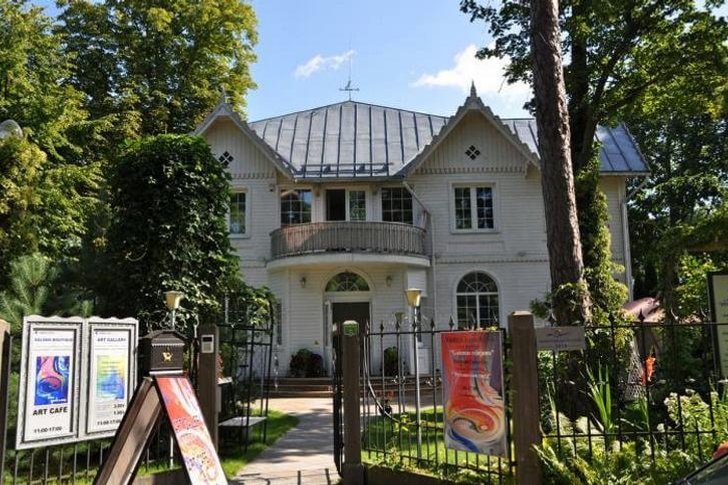
House of Aspasia
The name is derived from the pseudonym of the former owner of the house. Elza Plieksane was a poet and playwright. She and her husband lived here until her death in 1943. The building gradually fell into disrepair until it was restored in the 90s. Not only the blue and white façade was repaired, but the interior decoration was also restored. Under the roof of Aspasia's house, a museum was organized - a branch of the local art museum.
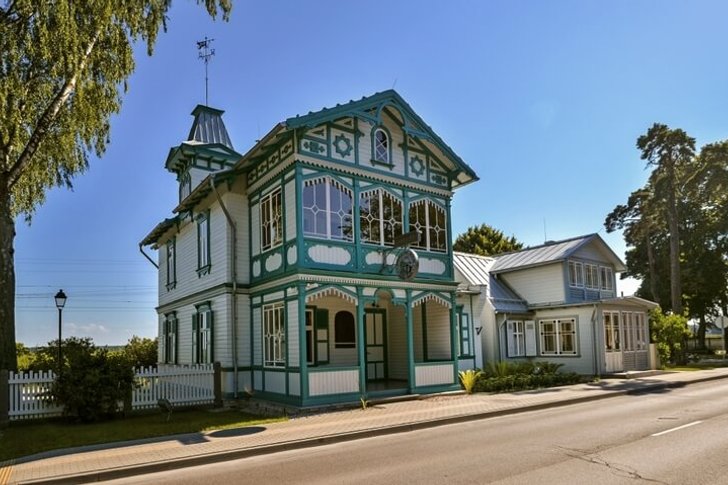
Holiday complex of Kristap and Augusta Morberg
An unusual Gothic castle appeared in the city in the first half of the 19th century. It was built of wood and covered with iron. There is a botanical garden on the territory of the holiday complex. The collection contains rare and exotic plants. The former owners bequeathed the property to the University of Latvia. Now the object is available for tours, and is also rented out for events, including weddings.
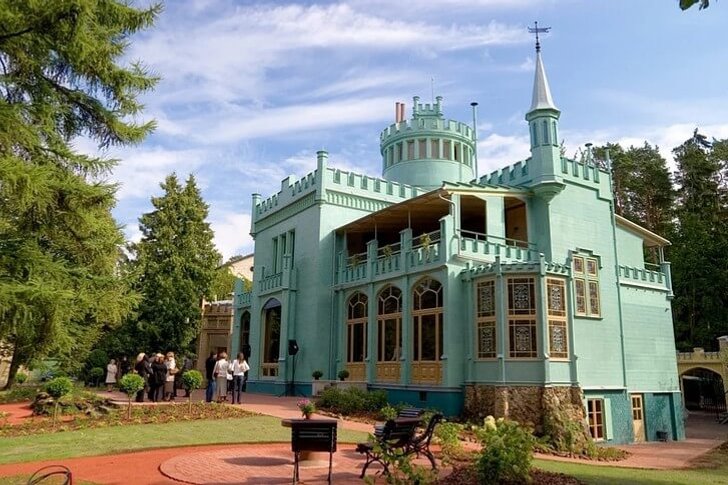
Former bathhouse of E. Racene
The construction of the bathing establishment was completed in 1916. All year round the bath welcomed clients, offering a large selection of baths with herbs and extracts. After the war, the building was turned into a clinic. In the 80s, they carried out a major reconstruction and significantly changed the external design. Later, they tried to return the initial design in order to preserve the historical value of the building. Tourists are not allowed inside.
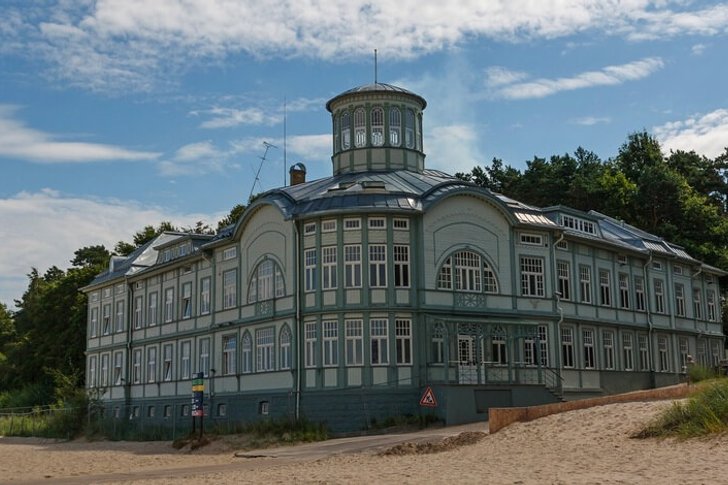
Dubulti Lutheran Church
Built from 1907 to 1909. The construction belongs to the typical representatives of the Riga Art Nouveau. There are also some details of romanticism. In addition to believers who regularly come to services, the church is also interesting for tourists. There are three reasons - the architecture in general, the tower towering above the district and organ music concerts. The church also has two choirs. Their performances are scheduled months in advance.

Statue of Lachplesis
Installed in 1954. Dedicated to the hero of Latvian folklore. Lachplesis is called a dragon slayer and all sorts of feats are attributed to him. His name translates as "tearing the bear." According to legend, the people of Jurmala wanted to donate the sculpture to their sister city. And it was originally a completely different character. For unknown reasons, the present was not accepted, and the authors of the project remade the statue, giving it a new meaning.
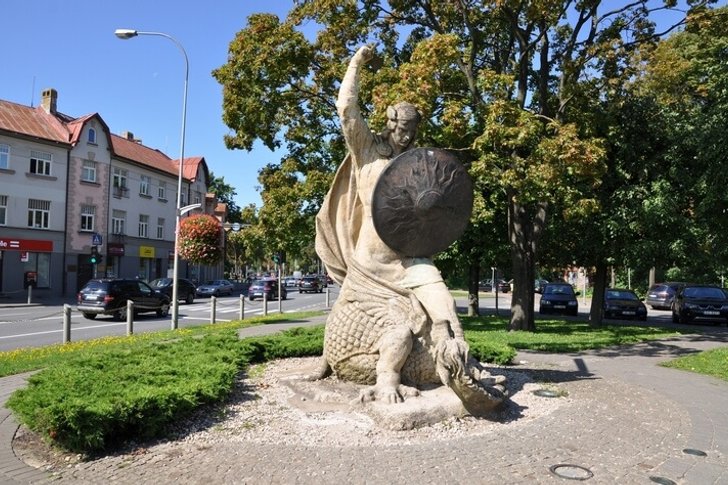
Globe of Jurmala
Appeared on Jomas Street in the early 70s of the last century. An unusual monument serves as a meeting place. In 2015, it was seriously damaged during street construction work. The globe had to be dismantled. Difficulties arose during the restoration process: it was made by a method that is no longer used. For this reason, the design has been modified. Already in 2016 he returned to his usual place.
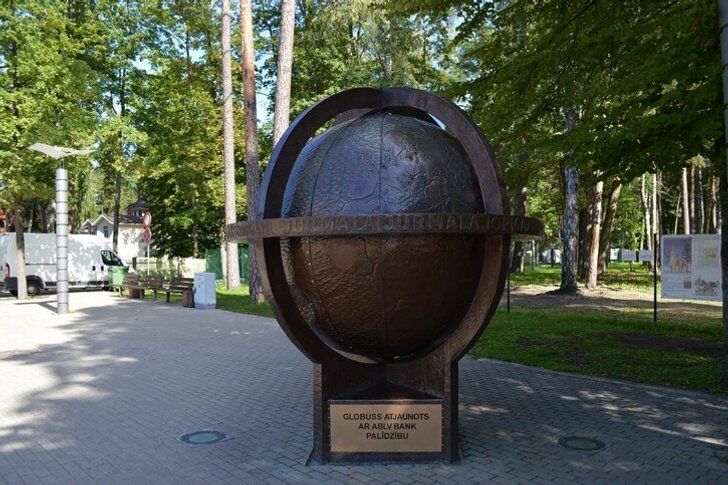
Sculpture "Turtle"
Installed in the Maiori area at the entrance to the sandy beach in 1995. The size of the turtle is impressive. It is completely cast in bronze according to the design of the artist and sculptor Janis Barda. Tourists and locals love to take pictures next to the monument. It is durable and is not afraid of the constant encroachment of the public. Sculpture is attributed different meanings. Some associate it with the unhurried course of life in Jurmala.
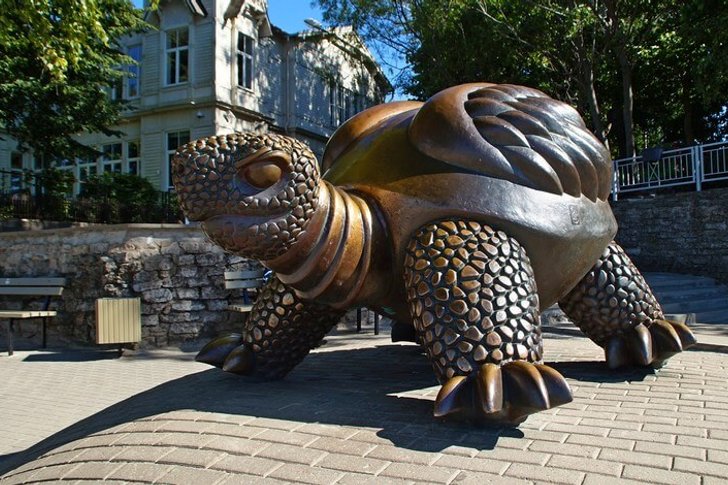
Jurmala Open Air Museum
This project has been under development since the 1970s. A real fishing village has been created in the open air in memory of the past of Jurmala. Tourists have access to workshops on knitting marine knots and repairing nets. The tasting of fish, which is cooked right here in small smokehouses, is also traditional. All objects are authentic and brought from different regions of the country. On Tuesdays admission is free.
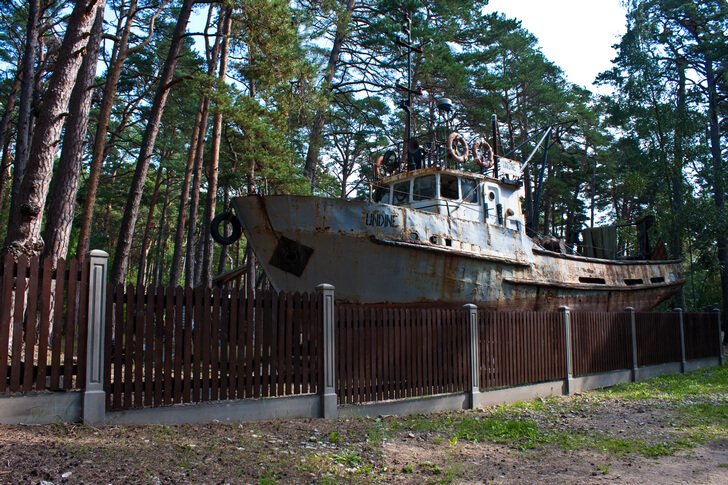
Livu Aquapark
The largest water park in northern Europe. The interior design of the three-story building is decorated in the Caribbean style. The territory is divided into zones: "Paradise Beach", "Captain Kid's Land", "Rainforest", "Shark Attack Zone". The entertainment facility operates all year round. Guests are offered about 40 attractions. Some have age restrictions. There are additional services, such as visiting a cafe.
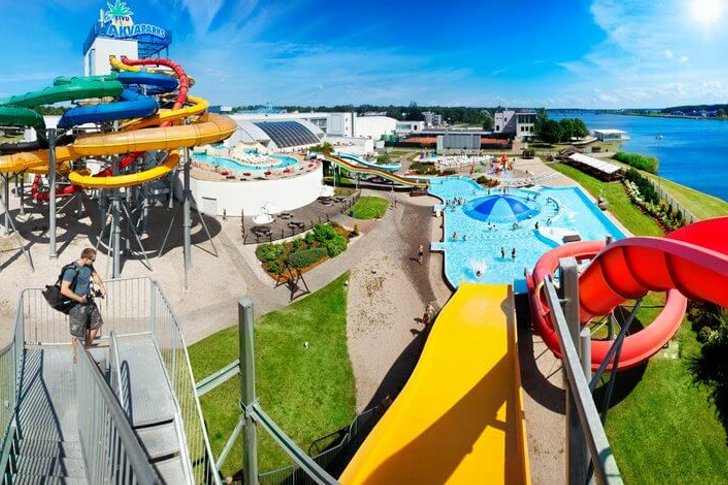
White dune in Lielupe
An unusual natural monument is located near the Priedaine station. The features of the dune are its absolutely white color and its perpendicular position in relation to the coastline. According to researchers, its formation took 150-200 years. The reason for the appearance of the dune is the breakthrough of the Lielupe River in 1757. The channel was restored, but an elevated sandy strip with a length of about 800 meters remained.

End of the world in Lielupe
Natural attraction in the vicinity of Jurmala. This is a coastal area near the bay, which can be reached by dunes. It is believed that the water is warmer here. In addition, the depth is gaining momentum immediately, which significantly distinguishes the "Edge of the World" from other places for swimming. There is no organized crossing to the other side. Although enthusiasts find unusual ways. Nearby is a nudist beach.
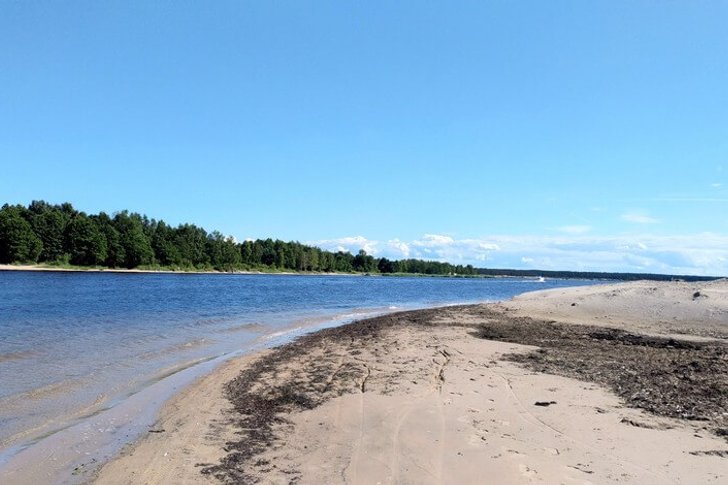
Ragakapa Natural Park
The territory of the park is covered with dunes and pine forest. Sandy hills stretched for about a kilometer. And the age of some trees reaches 300 years. For the convenience of tourists, several walking routes have been created. They have distinctive features, but each has viewing platforms. The most popular trails: "Natural", "Pine", "Vegetable", "Trail of insects".
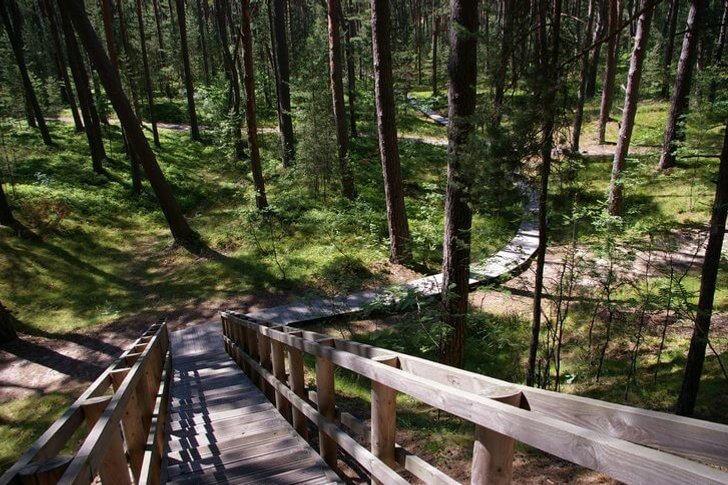
Ķemeri National Park
Created in 1997. The area is more than 38 thousand hectares, of which approximately 2 thousand are in the Gulf of Riga. The territory is divided into 3 sections. People live in the buffer zone, while the other two are protected and specially protected. According to legend, the area got its name from the name of the forester. He lived in the 16th century and kept a guest house. The park has a wide species diversity of flora and fauna, there are mineral springs and walking trails.
